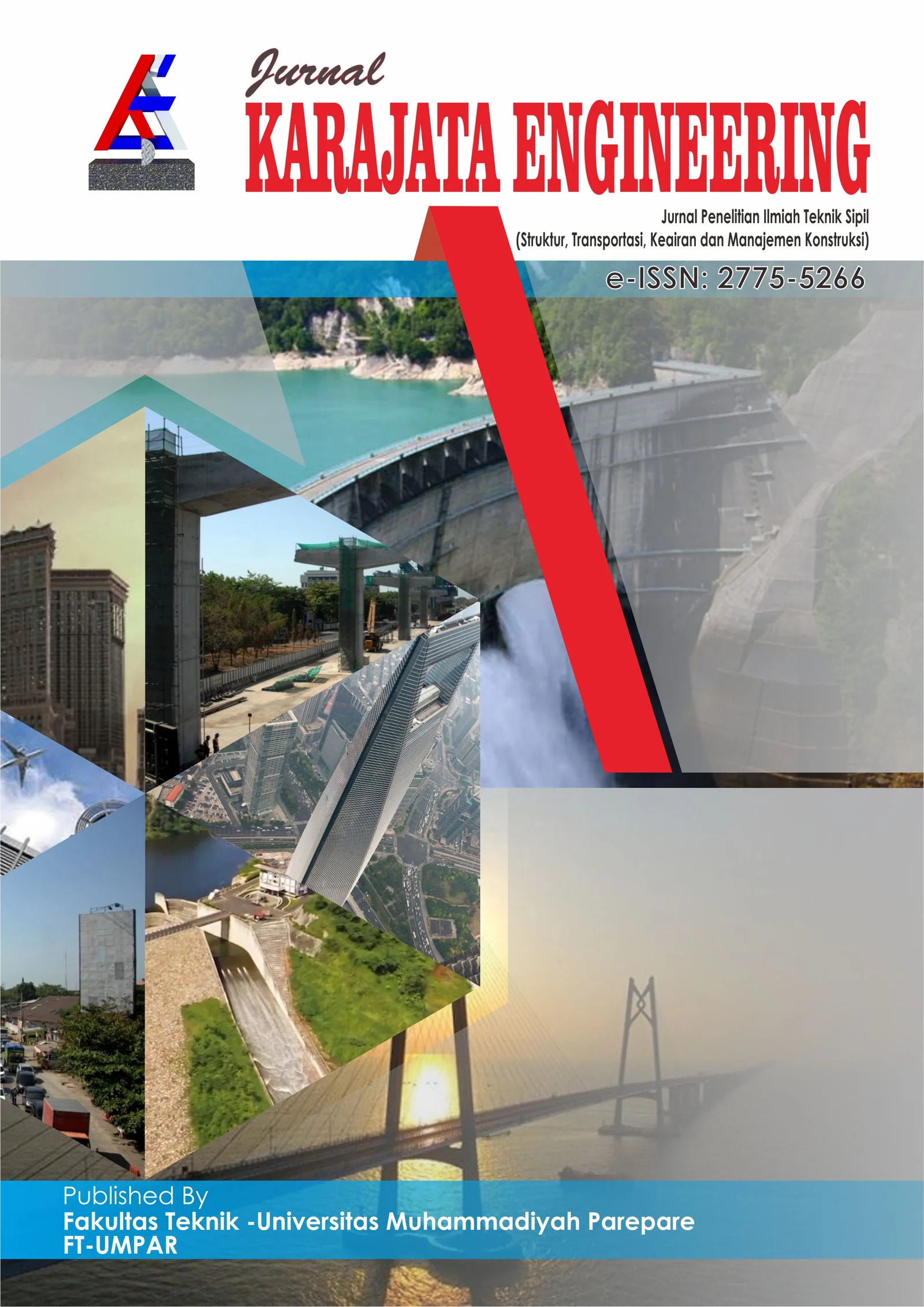Tingkat Pemahaman Keselamatan Dan Kesehatan Kerja Pada Pembangunan Gedung MAN 2 Banggai Standar ISO 45001
Abstract
Occupational Safety and Health is crucial in construction to protect workers and prevent accidents. However, in projects such as the MAN 2 Banggai Building, OHS implementation, particularly in first aid and near miss incidents, remains inadequate. The increasing number of occupational fatalities in Central Sulawesi highlights the urgent need to improve the OHS evaluation system in the field. To address this challenge, this study uses the Countenance Stake Model linked to the ISO 45001 standard. The purpose of this study was to evaluate the extent of workers' understanding of OHS principles, assess strengths and weaknesses in their implementation, and provide data-based recommendations for improvement. The evaluation results indicate that although workers are quite strong in risk identification, there are weaknesses in OHS policies and worker technical competencies. While resources and communication are adequate, aspects of documentation, internal audits, and management reviews still need to be improved. Organizations should raise worker awareness through regular evaluations and targeted training.
References
Achmad, Nefaldri, A., Arfah, A., Mente, L., & Murfat, M. Z. (2021). Pengaruh Keselamatan Dan Kesehatan Kerja Terhadap Produktivitas Kerja Karyawan Bagian Engineering Di PT. Industri Kapal Indonesia (IKI) Makassar. Center of Economic Students Journal, 4(3), 215-224.
Ariska, Yeni, & Djudiyah, D. (2024). Peran Iklim Keselamatan Terhadap Perilaku Aman Karyawan. Cognicia, 12(246), 46–53.
Bendriyanti, Prima, R., & Dewi, C. (2015). Model ‘Countenance Stake’ Dalam Evaluasi Pembelajaran Bahasa Inggris Di Perguruan Tinggi. Academia Accelerating the world’s research: 2.
Darmayani, Satya, Sa’diyah, A., Supiati, S., Muttaqin, M., Rachmawati, F., Widia, C., & Pattiapon, M. L. (2023). Kesehatan Keselamatan Kerja (K3). 1st ed. Semarang: Yayasan Prima Agus Teknik.
Fakultas Teknik Unhas. (2018). Sistem Manajemen Keselamatan Dan Kesehatan Kerja Iso 45001:2018. Makassar: Universitas Hasanuddin
Ginting, B. S. B., Sukwika, T., & Situmorang, M. T. N. (2022). Analisis Kesenjangan Penerapan ISO 45001:2018 pada Perusahaan Makanan Ringan. Jurnal Ekologi, Masyarakat Dan Sains, 3(1), 3-9.
Marnis, Priyono. (2008). Manajemen Sumber Daya Manusia. 1st ed. Sidoarjo: Zifatama publising.
Nasution, A. F. (2023). Metode Penelitian Kualitatif. 1st ed. ed. Medan: CV. Harfa Creative.
Purwanto, A., Asbari, M., Novitasari, D., Fahmi, K., Mustofa, A., Rochmad, I., & Wahyuni, I. S. (2021). Peningkatan Keselamatan Kerja Melalui Pelatihan ISO 45001:2018 Sistem Manajemen Keselamatan dan Kesehatan Kerja Pada Industri Manufaktur di Tangerang. Journal of Community Service and Engagement, 1(02), 1–6.
Putri, M. D., Hartono, M., & Sari, Y. (2020). Perancangan Sistem Manajemen Keselamatan dan Kesehatan Kerja Berbasis Iso 45001:2018 dengan Mempertimbangkan Kansei Engineering di PT. DLM, Surabaya. Calyptra : Jurnal Ilmiah Mahasiswa Universitas Surabaya, 9(1).
Safitri, D. (2023). Analisis Penerapan Program Keselamatan Dan Kesehatan Kerja Di PT. Adhi Karya Proyek Pembangunan Gedung Pusat Pengujian Dan Pengembangan Inovasi (P31) Universitas Gadjah Mada. Jurnal Lentera Kesehatan Masyarakat, 2(1), 13-24
Šolc, M., Blaško, P., Girmanová, L., & Kliment, J. (2022). Tren Perkembangan Kesehatan dan Keselamatan Kerja dalam Konteks ISO 45001:2018. Standar, 2(3), 294-305.
Solusi, S. (2023, September 14). Memahami Detail ISO 45001: Prinsip, Tujuan, Dan Fokus Utama Standar. Retrieved from https://synergysolusi.com/artikel-qhse/memahami-detail-iso-45001-prinsip-tujuan-dan-fokus-utama-standar/
Syahrullah, Y., & Febriani, A. (2019). Valuasi Standar Manajemen Kesehatan Dan Keselamatan Kerja ISO 45001:2018 Untuk Mencegah Terjadinya Kecelakaan Kerja Akibat Kegagalan Proyek Infrastruktur. Prosiding SNATIF Ke-6 Tahun 2019, (pp. 291-300).
Wiradarma, R. (2025). Analisis Penggunaan Safety Harness Di Ketinggian Dalam Menjamin. Venus Jurnal Publikasi Rumpun Ilmu Teknik 3(3), 45-51.




.png)


.png)








